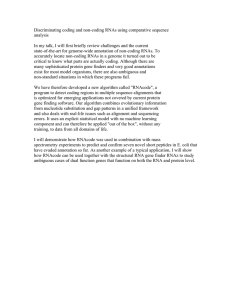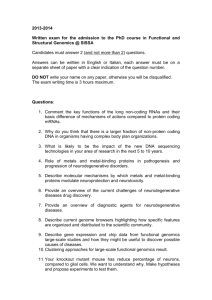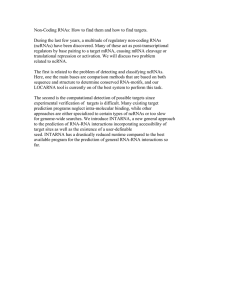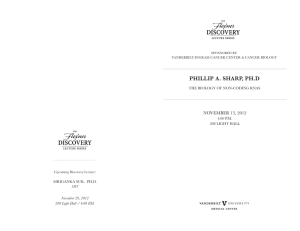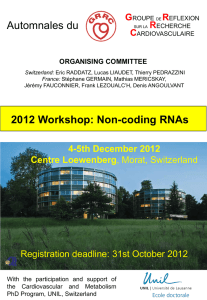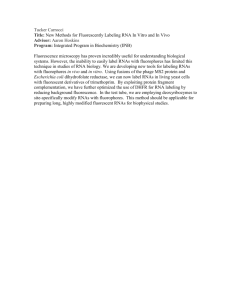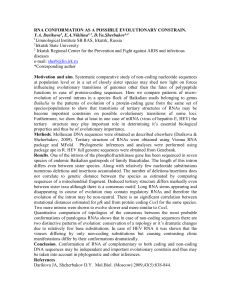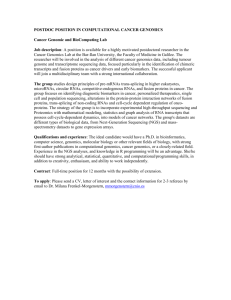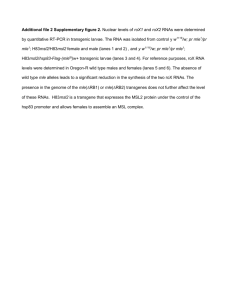2014 Admission Exams
advertisement
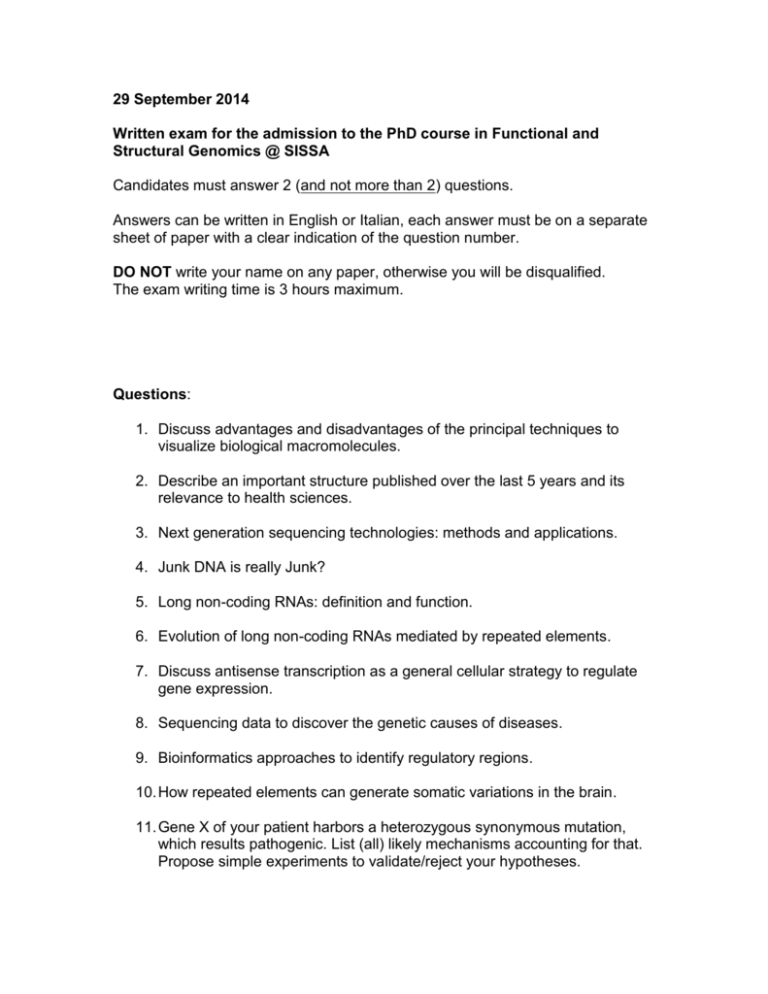
29 September 2014 Written exam for the admission to the PhD course in Functional and Structural Genomics @ SISSA Candidates must answer 2 (and not more than 2) questions. Answers can be written in English or Italian, each answer must be on a separate sheet of paper with a clear indication of the question number. DO NOT write your name on any paper, otherwise you will be disqualified. The exam writing time is 3 hours maximum. Questions: 1. Discuss advantages and disadvantages of the principal techniques to visualize biological macromolecules. 2. Describe an important structure published over the last 5 years and its relevance to health sciences. 3. Next generation sequencing technologies: methods and applications. 4. Junk DNA is really Junk? 5. Long non-coding RNAs: definition and function. 6. Evolution of long non-coding RNAs mediated by repeated elements. 7. Discuss antisense transcription as a general cellular strategy to regulate gene expression. 8. Sequencing data to discover the genetic causes of diseases. 9. Bioinformatics approaches to identify regulatory regions. 10. How repeated elements can generate somatic variations in the brain. 11. Gene X of your patient harbors a heterozygous synonymous mutation, which results pathogenic. List (all) likely mechanisms accounting for that. Propose simple experiments to validate/reject your hypotheses. 12. When parental mice (either males or females) learn to fear a particular odor, both offspring and progenies are born fearing it... maybe Lamarck was not fully wrong... how may this happen? Propose hypotheses and experiments to validate/reject them. 13. Describe prion and prion-like mechanisms of propagation in neurodegenerative diseases. 14. Therapeutic approaches to neurodegenerative diseases. 15. Drug discovery strategies aimed to overcome resistance. 16. Protein and non-protein targets in drug discovery.
